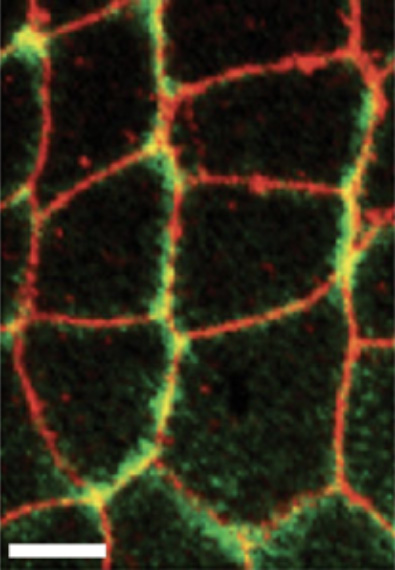Drosophila melanogaster
The tiny pests you may have noticed flying around your kitchen when you’ve left produce out for too long are actually one of the greatest modern scientific contributors – in fact, they have been a part of the discoveries that led to at least five Nobel awards. Drosophila melanogaster, or the fruit fly, is a commonly used model organism in research, and what scientists uncover about the biology of Drosophila has many applications to human health. Although adult flies are much smaller than humans at about 3 or 4 millimeters long, they have approximately 14,000 genes – compared to humans’ 24,000, making these small flies a great proxy for understanding human genetics.
The image above is a very close-up shot of the epithelium of Drosophila melanogaster and was taken in a fixed tissue using immunofluorescence. Individual cells can be seen outlined with color. Nrt, a plasma membrane protein that influences adhesion between membranes of adjacent cells can be seen in red. Myosin II, a protein necessary for regulating cell membrane and tissue shape, is seen in greenish yellow.
(Scale bar of image: 2.5 microns)

